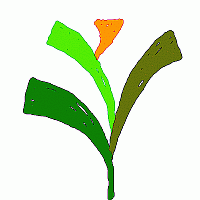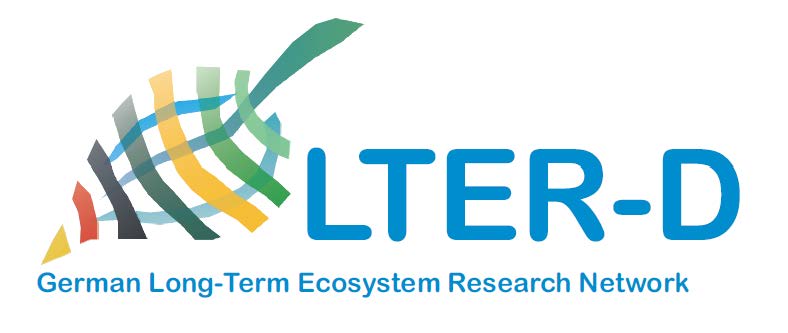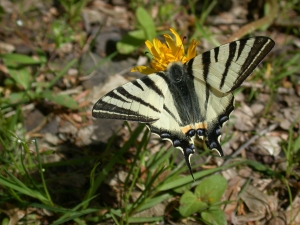Projekte
Landnutzungskonflikte (Helmholtz Thema in der programmorientierten Förderung - POF 3); 2014-18; Helmholtz Gemeinschaft
Neue Ökosysteme (Helmholtz Thema in der programmorientierten Förderung - POF 3); 2014-18; Helmholtz Gemeinschaft
EndYear_Projektlaufzeit_Acronym (& url)_Titel _Rolle BZF_Förderung_Arbeitsgruppen BZF
- 2019_2015-2019_ eLTER _eLTER H2020: European Long-Term Ecosystem and Socio-Ecological Research Infrastructure_Contribution_EU HORIZON 2020_Social and Animal Ecology_
- 2019_2015-2019_ STACCATO _SusTaining AgriCultural ChAnge Through ecological engineering and Optimal use of natural resources_Coordination_BiodivERsA, Federal Ministry for Education and Research (BMBF)_Social and Animal Ecology_
- 2018_2015-2018_no webpage_Relative effects of local and regional factors as drivers for plant community diversity functional trait diversity and genetic structure of species on Baltic uplift islands_Co-PI_DFG_Molecular Ecology_
- 2018_2011-2018_ LEGATO _Land-use intensity and Ecological Engineering – Assessment Tools for risks and Opportunities in irrigated rice based production systems_Coordination_Federal Ministry for Education and Research (BMBF)_Social and Animal Ecology_
- 2017_2014-2017_ BEF-China _The role of genetic diversity for the relationship between biodiversity and ecosystem functions_Co-PI_DFG_Molecular Ecology_
- 2017_2014-2017_EpiDiv ( Biodiversity Exploratories )_Epigenetic diversity of grassland plants in the Biodiversity Exploratories_Co-PI_DFG_Molecular Ecology_
- 2017_2012-2017_ EU BON _Building the European Biodiversity Observation Network__EU FP7_Macroecology_
- 2017_2012-2017_ TEEB-DE _Natural Capital Germany - TEEB DE_Contribution_BMUB, BfN_
- 2017_2014-2017_no webpage_Erfassung der Flora und Fauna in den Schutzgebieten der Stadt Halle (Saale)_Coordination_UFZ-BZF, Stadt Halle (Fachbereich Umwelt)_
- 2016_2013-2016_ EC21C _European Conservation for the 21st Century__BiodivERsA/Federal Ministry for Education and Research (BMBF)_
- 2016_2013-2016_no webpage_The importance of antagonistic interactions for plant species coexistence and ecosystem functioning_PI_DFG, iDiv Flexible Pool_Plant Population Ecology_
- 2015_2011-2015_no webpage_Local adaptation and gene flow in Empetrum hermaphroditum a keystone species of boreal-arctic ecosystems along an altitudinal stress gradient_Co-PI_DFG_Molecular Ecology_
- 2015_2012-2015_ APPEAL _Assessment and valuation of Pest suppression Potential through biological control in European Agricultural Landscapes_PI_BiodivERsA, Federal Ministry for Education and Research (BMBF)_
- 2015_2010-2015_ ExpeER _Experimentation in Ecosystem Research_Contribution_EU FP7_Social and Animal Ecology_
- 2015_2011-2015_ GeneLand _The relationship between neutral and adaptive genetic diversity in the context of historic and present land use and landscape structure _PI_DFG_Molecular Ecology, Plant Population Ecology_
- 2015_2010-2015_ STEP _Status and Trends of European Pollinators_PI_EU FP7_Social and Animal Ecology_
- 2014_2011-2014_ BEF-China _The role of genetic diversity for the relationship between biodiversity and ecosystem functions_PI_DFG_Molecular Ecology_
- 2014_2010-2014_ FunDivEurope _Functional significance of forest biodiversity in Europe. Task IV.7 Resistance to invasive plant species_Task leader_EU FP 7_Plant Population Ecology_
- 2014_2011-2014_no webpage_The role of seed limitation, herbivory and plant invasions for species diversity and biomass production in herbaceous communities_PI_Graduate school HIGRADE_Plant Population Ecology_
- 2013_2010-2013_ EnvEurope _Environmental quality and pressures assessment across Europe: the LTER network as an integrated and shared system for ecosystem monitoring_Contribution_EU Life+_Social and Animal Ecology_
- 2013_2006-2013 _ GIN _Integrating the ecology and evolution of invasions: a predictive framework and collaborative approach_Contribution_NSF/USA_Plant Population Ecology_
- 2012_2008-2012_ BEF-China _The role of genetic diversity for the relationship between biodiversity and ecosystem functions_PI_DFG_Molecular Ecology_
- 2012_2009-2012_ CLIMIT _CLimate change impacts on Insects and their MITigation_Coordination_BiodivERsA, Federal Ministry for Education and Research (BMBF)_
- 2012_2010-2012_PRONAS PRONAS _PROjektionen der NAtur für Schulen_Coordination (PI)_DBU_Social and Animal Ecology_
- 2012_2011-2012_no webpage_The impact of biological invasions and herbivory on the functioning of grassland ecosystems_PI_DAAD PPP-USA_Plant Population Ecology_
- 2012_2007-2012 _no webpage_The role of soil microbes in plant invasions: inhibition at home and facilitation away?_Contribution_NSF/USA_Plant Population Ecology_
- 2012_2009-2012_no webpage_Monitoring "Klimawandel und Biodiversität"_PI_LfULG_
- 2011_2008-2011_GenLink_The link between genetic diversity and species diversity: patterns and processes in grassland plants _PI_DFG_Molecular Ecology_
- 2011_2008-2011 _ QUANTGEN _The evolutionary impact of land use: quantitative genetic diversity and phenotypic selection of grassland plants in the Biodiversity Exploratories_PI_DFG, SPP Biodiversity Exploratories_Plant Population Ecology_
- 2011_2008-2011_ RAME _Research Association Mining and Environment in Vietnam_Contribution and sub-project coordination_BMBF_
- 2010_2007-2010 _DIVA III / TP PHYTO_Plant diversity in grassland ecosystems: The importance of local adaptation, isolation, and invasions_PI_BMBF, collaborative project DIVA III, BIOLOG programme_Plant Population Ecology_
- 2010_2007-2010_SUBICON_SUBICON – Successional change and biodiversity conservation in a red oak chronosequence_PI_BMBF_Molecular Ecology_
- 2009_2006-2009_ MACIS _Minimisation of and Adaptation to Climate change Impacts on biodiverSity_PI_EU FP6_Social and Animal Ecology_
- 2009_2007-2009_ RUBICODE _Rationalising Biodiversity Conservation in Dynamic Ecosystems_PI_EU FP6_Social and Animal Ecology_
- 2008_2006-2008_no webpage_Developing molecular tools for conservation of amphibian species_Co-PI_Humboldt foundation_Molecular Ecology_
- 2008_2006-2008_ COCONUT _Understanding effects of land use changes on ecosystems to halt loss of biodiversity due to habitat destruction, fragmentation and degradation_PI_EU FP6_Social and Animal Ecology_
- 2007_2003-2007_ ALARM _Assessing Large scale Risks for biodiversity with tested methods_Coordination_EU FP6_Social and Animal Ecology_
- 2007_2003-2007_ DAISIE _Delivering Alien Invasive Species Inventories for Europe__EU FP6_
- 2007_2003-2007 _DIVA II / TP PHYTO_Plant diversity in grassland ecosystems: The roles of regional species pool, invasions and herbivory_PI_BMBF, collaborative project DIVA II, BIOLOG programme_Plant Population Ecology_
- 2007_2004-2007_SUBICON_Successional change and biodiversity conservation in a red oak chronosequence_PI_BMBF_Molecular Ecology_
- 2006_2003-2006_no webpage_Dynamic range limitation and reaction to climate change: metapopulation processes in marginal populations of the Black Rush (Juncus atratus)_PI_DFG_Molecular Ecology_
- 2006_2003-2006 _INVASIONS_The invasiveness of cultivated forms of an alien plant: a case study on Mahonia aquifolium_PI_BMBF, collaborative project INVASIONS_Plant Population Ecology, Molecular Ecology_
- 2006_2003-2006_INVASIONS_The invasion potential of alien species_Co-PI_BMBF_Molecular Ecology_
- 2006_2002-2006_ MacMan _Maculinea Butterflies of the Habitats Directive and European Red List as Indicators and Tools for Habitat Conservation and Management_Coordination_EU FP5_Social and Animal Ecology_
- 2005_2005_no webpage_Literature review Monitoring of genetically modified organisms_PI_SMLU Dresden_Molecular Ecology_
- 2004_2001-2004_ Greenveins _Greenveins - Vulnerability of biodiversity in the Agro-ecosystem as influenced by Green Veining and Land-use Intensity_Co-PI_EU_Molecular Ecology, Social and Animal Ecology_
- 2004_2001-2004_SUBICON_ Successional change and biodiversity conservation in a red oak chronosequence_PI_BMBF_Molecular Ecology_
- 2003_2001-2003_no webpage_Phylogeography of the Eurasian beaver Castor fiber L. and its implications for conservation_PI_EU_Molecular Ecology_
- 2003_2002-2003_no webpage_Genetic differentiation and hybridisation in alien and native plant species_PI_NATO_Molecular Ecology_
- 2003_2000-2003_ MOSAIK _Alternative Managementverfahren für die Pflege von Trockenstandorten_Federal Ministry for Education and Research (BMBF)_Social and Animal Ecology_
- 2002_1999-2002_no webpage_Effect of elevated CO2 on genetic variation of plant populations in a calcareous grassland_PI_DFG_Plant Population Ecology_
- 1996_1993-1996_REGNAL (no webpage)_Structure and dynamics of ecological communities in the nature park Dübener Heide_PI_BMBF, collaborative project REGNAL_Plant Population Ecology_

Die Datenbank biologisch-ökologischer Merkmale der Flora Deutschlands (BiolFlor) berücksichtigt 3659 Arten von Farn- und Blütenpflanzen einschließlich der in Deutschland etablierten Neophyten sowie der häufigsten unbeständigen Sippen. Sie ist die erste biologisch-ökologische Datenbank für die gesamte Gefäßpflanzenflora Deutschlands mit Angaben zu über 60 Merkmalen aus den Bereichen:
- Floristischer Status
- Chromosomenzahlen, Ploidiegrade, DNA-Gehalte
- Phylogenie
- Morphologie der vegetativen Organe
- Blühphänologie
- Blüten- und Reproduktionsbiologie
- Merkmale der Samen, Früchte, Ausbreitungs- und Keimungseinheiten
- Ökologische Strategietypen
- Nutzungswertzahlen der Pflanzenarten des Grünlandes
- Geographische Areale
- Indikation des anthropogenen Einflusses auf die Vegetation
- Biotopbindung
- Pflanzensoziologische Bindung
Durch die Aufnahme der Synonyme der wissenschaftlichen Pflanzennamen aus der "Standardliste" von Wisskirchen und Haeupler ist unabhängig von der zur Recherche verwendeten Nomenklatur ein einfacher Zugriff auf die Daten möglich. Inhaltliche Grundlage von BiolFlor sind bereits vorhandene Datenbanken, eine umfangreiche Literaturauswertung (über 1800 Literaturquellen) sowie neue Datenerhebungen und Zusammenfassungen von Expertenwissen.

Das deutsche Netzwerk für ökologische Langzeitforschung LTER-D wurde 2004 gegründet und wird seitdem durch das Helmholtz-Zentrum für Umweltforschung UFZ maßgeblich unterstützt.
Die TERENO-Standorte (Terrestrial Environmental Observatories; ein Helmholtz Projekt) des UFZ sind Bestandteil von LTER-D.

Im Frühjahr 2005 startete in Deutschland das erste bundesweite Monitoring von tagaktiven Schmetterlingen. Gesucht wurden und werden auch weiterhin Freiwillige, die entlang festgelegter Strecken (= Transekte) Tagfalter zählen.
Obwohl die Tagfalter eine sehr gut untersuchte Insektengruppe sind, weiß man bundesweit nicht genug über die Bestandssituation und -entwicklung der ca. 170 Arten. Häufig weiß man nicht genau, warum bestimmte Arten aus einem Gebiet verschwinden, oder man registriert das Verschwinden nicht einmal. Das gleiche gilt für Arten, die ihr Areal ausdehnen, bzw. bei uns neu einwandern. Eine landesweite, kontinuierliche Bestandsaufnahme aller Arten, das so genannte Monitoring, kann hier eine ganz neue Wissensbasis schaffen. Mit einem Monitoring wird die Bestandsentwicklung der einzelnen Arten über viele Jahre hinweg dokumentiert und z.B. mit Veränderungen in der Landschaft in Zusammenhang gebracht.
Bereits seit 1976 beteiligen sich in Großbritannien schmetterlingsbegeisterte Freiwillige aus der Bevölkerung am Butterfly Monitoring Scheme auf der Basis von so genannten Linientransekt-Zählungen. Das regelmäßige Erfassen von Tagfaltern entlang festgelegter Strecken wurde standardisiert und in andere Länder übertragen (seit 1990 in den Niederlanden, seit 1991 in der belgischen Provinz Flandern und seit 1994 in Katalonien, Spanien). 2001 begann man auch in Nordrhein-Westfalen mit der Registrierung von Tagfaltern. Aufbauend auf den bereits gemachten Erfahrungen läuft seit 2005 das Tagfalter-Monitoring Deutschland; den Startschuß gab die Aktion Abenteuer Schmetterling;.
Je mehr Freiwillige sich melden, desto besser wird unser Bild von der heimischen Tagfalterfauna. Die notwendigen Artenkenntnisse können sich auch Laien in relativ kurzer Zeit aneignen. Die Daten jeder Saison werden in Jahresberichten veröffentlicht, so daß man die Beobachtungen auf dem eigenen Transekt mit der Entwicklung z. B. in anderen Landesteilen vergleichen kann.
Seit dem Sommer 2006 gibt es die Möglichkeit, die Daten der Transektzählungen direkt über das Internet in unsere Online-Datenbank einzugeben. Jeder registrierte Transektzähler kann seine Daten selber eingeben und verwalten. Darüber hinaus gibt es z.B. die Möglichkeit, bundesweite Verbreitungskarten aus den bisher gemeldeten Daten zu erstellen oder Belegfotos hochzuladen.
.jpg)
